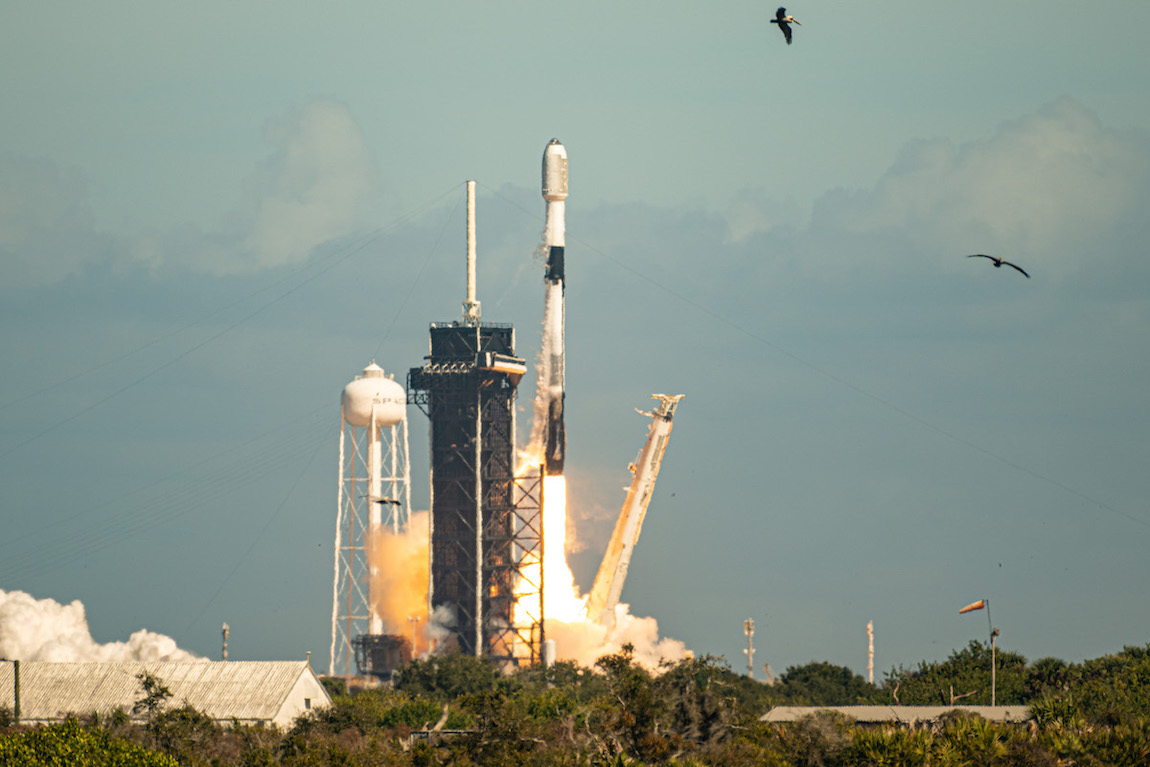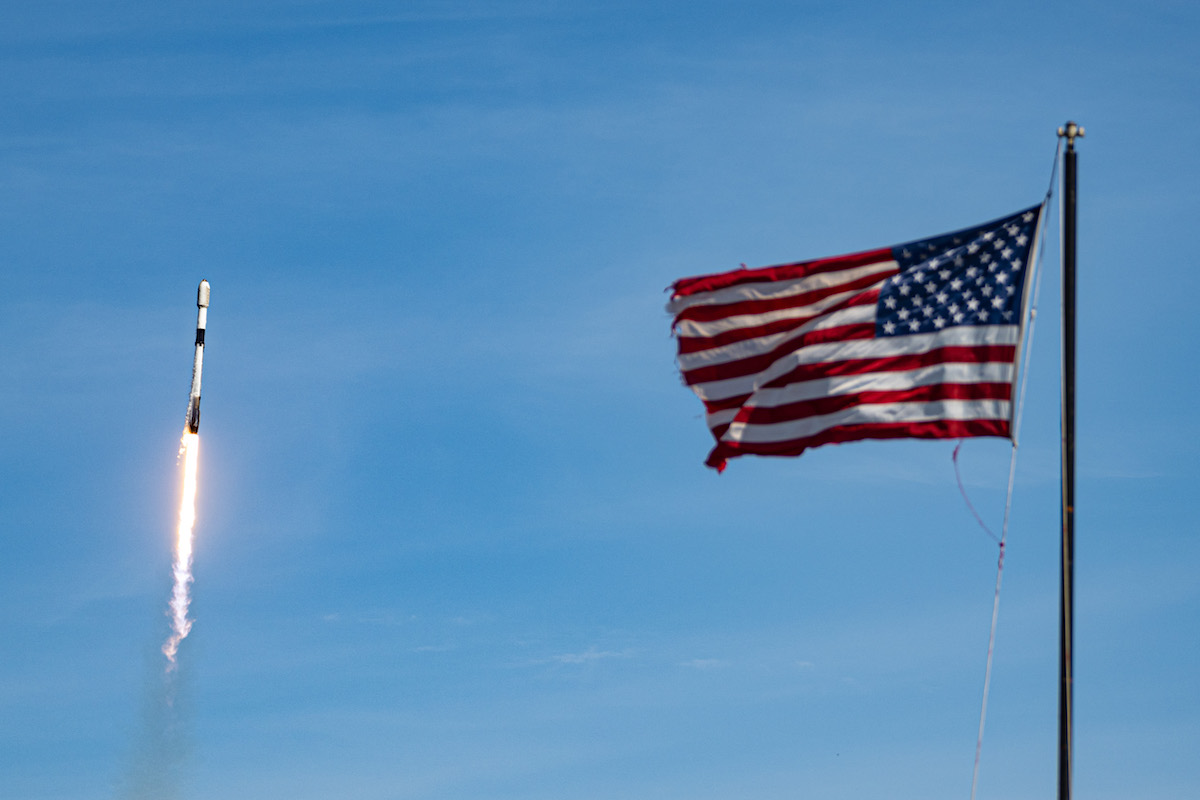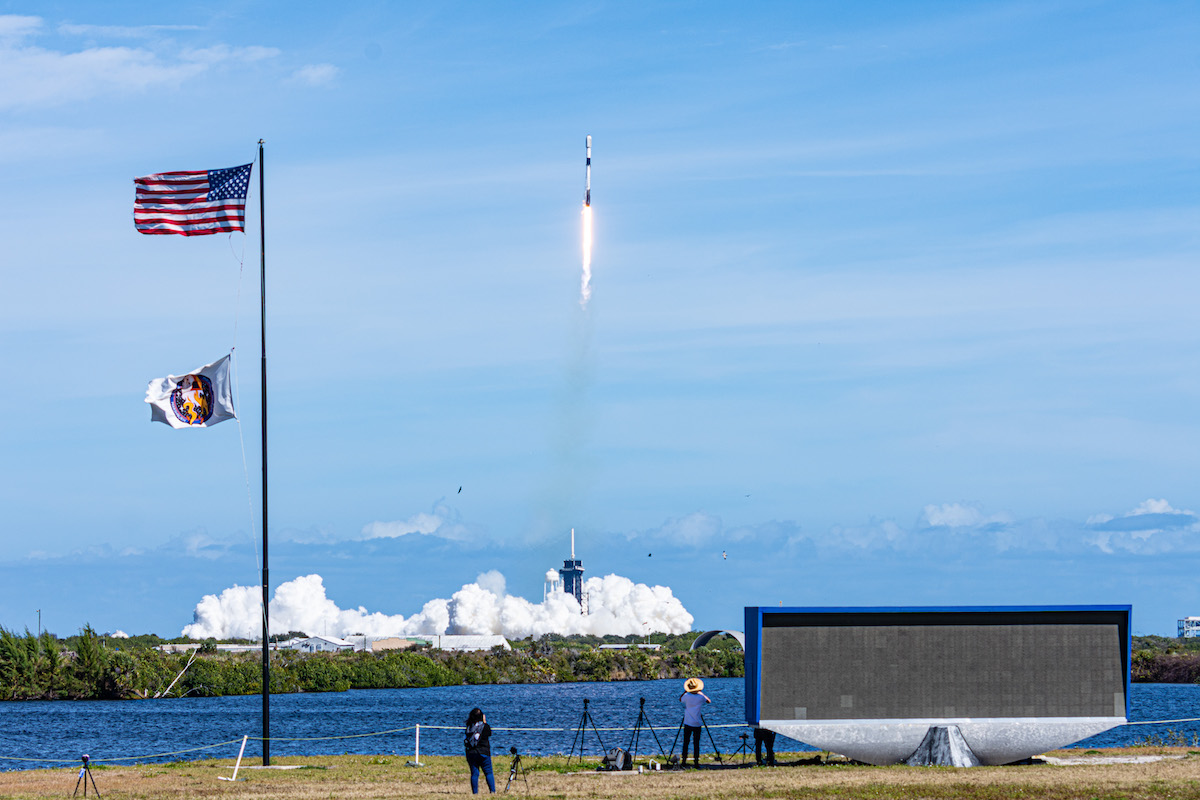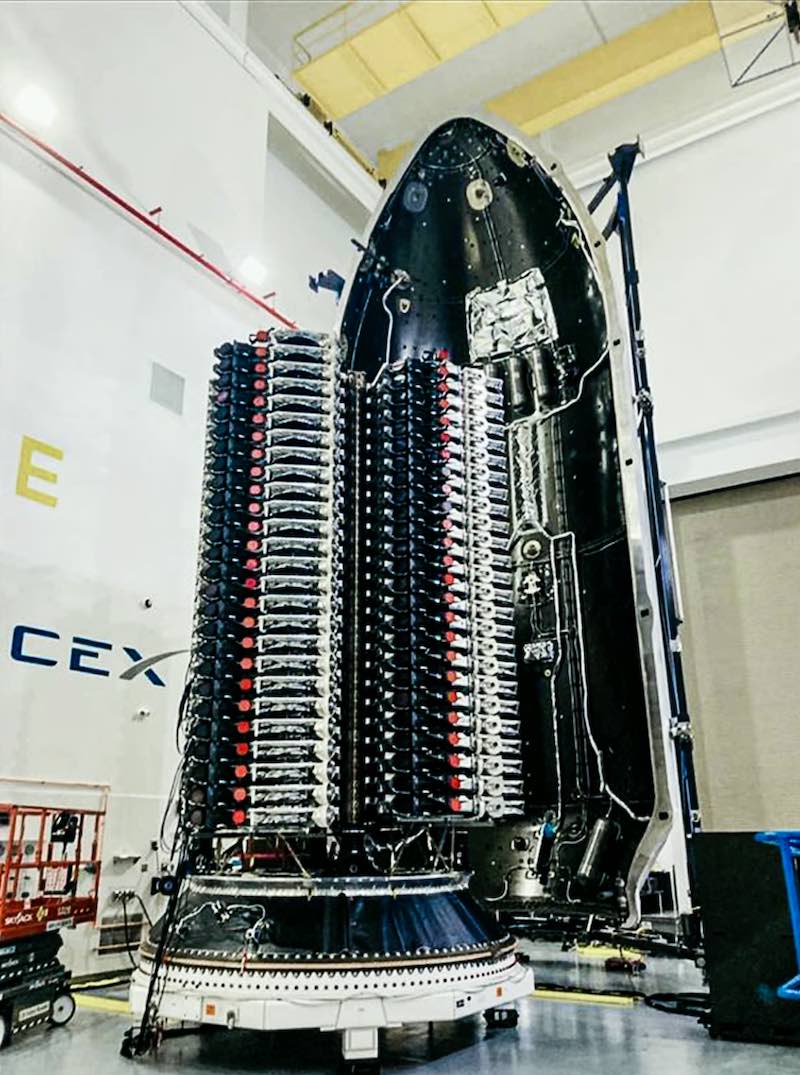
Another 49 Starlink internet satellites lifted off Thursday from Kennedy Space Center in Florida atop a Falcon 9 rocket, notching SpaceX’s third launch and landing this week, and the company’s sixth mission in 28 days.
A Falcon 9 rocket launched from pad 39A at the Florida spaceport at 1:13:20 p.m. EST (1813:20 GMT) Thursday. Thrust from nine Merlin engines powered the launcher into a clear sky on a course southeast from Florida’s Space Coast.
The mission, designated Starlink 4-7 in SpaceX’s launch schedule, aimed to release the Starlink satellites at T+plus 15 minutes, 31 seconds, into an orbit ranging in altitude between 130 miles and 210 miles (210 by 339 kilometers) at an inclination of 53.2 degrees to the equator.
SpaceX confirmed the Falcon 9’s upper stage reached the planned orbit, but officials had to wait an hour-and-a-half to confirm the successful separation of the 49 satellites. The deployment occurred when the rocket was flying outside the range of ground tracking stations, and SpaceX didn’t receive telemetry verifying the separation occurred until the rocket flew around Earth and passed over a tracking site in Alaska.
The satellites will unfurl solar arrays and turn on ion thrusters to maneuver into their operational orbit at an altitude of 335 miles (540 kilometers)
The first stage on Thursday’s mission, tail number B1061, landed on SpaceX’s drone ship “A Shortfall of Gravitas” in the Atlantic Ocean near the Bahamas. The landing concluded the sixth trip to space for the reusable B1061 booster stage.

The Starlink 4-7 mission was delayed from last weekend to wait for two higher-priority Falcon 9 launches. One of those, carrying an Italian radar satellite, suffered a series of delays caused by bad weather and a cruise ship in the downrange launch hazard area.
The Italian radar satellite launched from Cape Canaveral on Monday, and a classified National Reconnaissance Office spy satellite launched on a Falcon 9 rocket Wednesday from Vandenberg Space Force Base, California.
The 49 flat-panel Starlink satellites packaged inside the Falcon 9 rocket’s payload fairing for liftoff Thursday will join more than 1,500 operational spacecraft in SpaceX’s global internet network.
The satellites each weigh more than a quarter-ton, and were built at SpaceX’s Starlink factory in Redmond, Washington. SpaceX has launched 2,042 Starlink satellites to date, including spacecraft that have failed or already been decommissioned, and the 49 satellites that took off Thursday brought that number to 2,091.
SpaceX is continuing the deployment of around 4,400 Starlink satellites in five orbital “shells” at slightly different altitudes and at different inclinations, or angles to the equator. The launch Thursday targeted an orbital shell at an inclination of 53.2 degrees and an altitude of 335 miles.

SpaceX this week also unveiled a new “premium” offering of its Starlink internet service targeted at business and enterprise customers. Starlink Premium, SpaceX says, is “designed specifically for high demand users.”
As of last month, SpaceX said the Starlink network was live in 25 countries and regions, serving more than 145,000 users worldwide. SpaceX builds its Starlink satellites on an assembly line in Redmond, Washington, and the company is developing and iterating its own user terminals.
For the standard Starlink service, customers pay $499 for a Starlink antenna and modem, plus a $99 refundable deposit. A subscription for the high-speed, low-latency service runs $99 per month.
To sign for SpaceX’s Starlink Premium product, a customer must pay a $500 refundable deposit and $2,500 for delivery of ground equipment to connect to the network. The monthly rate for service is $500.
Starlink Premium offers double the antenna capability of the standard Starlink service, along with a signal that’s designed to perform better in extreme weather, according to SpaceX. Deliveries for Starlink Premium customers will begin in the second quarter of this year.

“Starlink Premium users can expect download speeds of 150-500 Mbps and latency of 20-40ms, enabling high throughput connectivity for small offices, storefronts, and super users across the globe,” SpaceX says on its website.
SpaceX hopes to use revenue from the Starlink business unit to help fund the company’s ambitions to complete development of the heavy-lift Starship rocket, a massive fully reusable launcher designed to eventually replace the Falcon 9 and Falcon Heavy rockets.
SpaceX plans to launch more Starlink missions in late February from Florida and California. The next launch from Cape Canaveral is scheduled for no earlier than Saturday, when a commercial small satellite launcher developed by Astra will take off with four CubeSats for NASA.
Email the author.
Follow Stephen Clark on Twitter: @StephenClark1.
